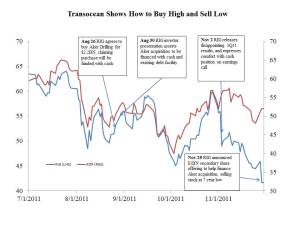Hedge Funds Challenge the Faithful
Many years ago, when hedge funds managed far fewer assets and returns were generally good, they were described as Absolute Return strategies. Perhaps the best industry magazine covering the sector is called AR Magazine. An Absolute Return suggests that it should be positive in most circumstances, which to most people sounds like an attractive proposition. But in 2008 hedge funds delivered a very definitely Not Absolute Return by losing 23% (as defined by the HFRX Global Hedge Fund Index) and thoughtful industry promoters concluded that a different adjective was needed to characterize their performance. Some settled on Uncorrelated Returns, suggesting that while they could no longer deliver consistently profitable results, they could promise that whatever they delivered would be uncorrelated with traditional assets. This can also be a worthy objective, assuming that over an appropriately long period of time the returns are positive. However, uncorrelated returns are not as easy to generate as you might think, and Felix Salmon noted just the other day that hedge fund industry returns were in fact becoming more correlated with equities.
And yet, CNBC reported on Wednesday that hedge funds were “dumping stocks” and hoping for a better year next year. Their report noted that hedge fund exposures to equities are the lowest since 2008. And so they ought to be. Because the HFRX is down 8.5% for the year, on track for its second worst year in history (handily eclipsed by 2008). Through November, the S&P500 (including dividends) is +1.1% for the year; the Dow Jones Corporate Bond Index is +6%. Clearly using the moniker “Absolute Return” more sparingly was a smart move. 2011 will mark the 9th consecutive year in which a 60/40 split between stocks and bonds has outperformed hedge funds. But the (sort of) good news is that hedge funds have shown that they can deliver uncorrelated returns. In fact, for many hedge fund clients they’ll be hard pressed to find other segments of their portfolio that have done as badly. There’s been a great deal of manic buying and selling, of risk on followed by risk off, of deleveraging and releveraging, and it looks as if for the average investor it’s burned up time, fees and capital.
If you’re not a hedge fund investor, you’ve probably done better in 2011 than those who are. Hedge funds are making my book appear more insightful than I might have hoped.
